Abstract
Sera from 608 wild rabbits were examined using serological tests for syphilis as an indicator of infection with Treponema paraluis-cuniculi. Only eight sera gave positive or weakly positive results in the rapid plasma reagin (RPR) test, and none of these eight sera gave positive results in the Treponema pallidum haemagglutination assay (TPHA). Thus, it appears that wild rabbit populations in Victoria, Australia, are not naturally infected with T paraluis-cuniculi. Normal Australian laboratory rabbits however were readily infected with T paraluis-cuniculi, either by intradermal or intratesticular inoculation or by the venereal route. In the latter case, treponeme-containing lesions developed after about five months' cohabitation with infected mates. The disease was successfully transmitted from male to female and from female to male rabbits by the venereal route. In most cases infected rabbits became RPR-positive (17/19 rabbits) and in all cases TPHA-positive (19/19), indicating that serological tests for syphilis can be used to screen rabbits for this disease.
Full text
PDF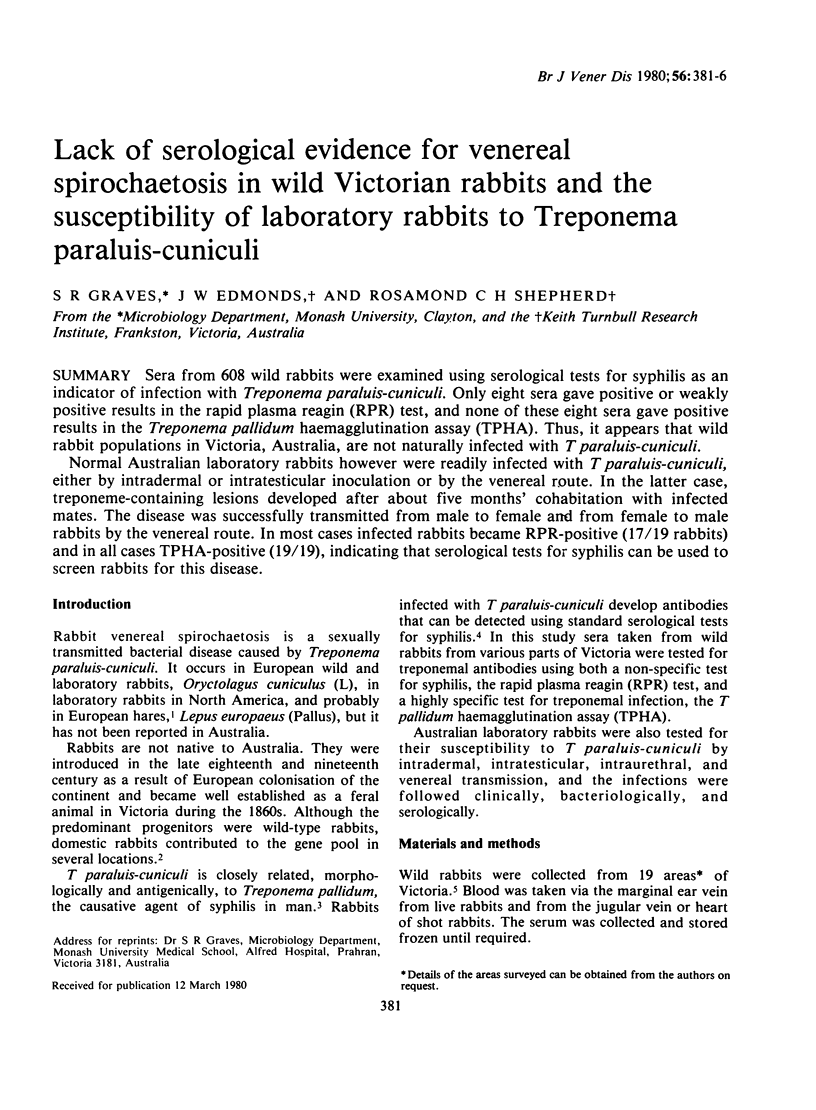
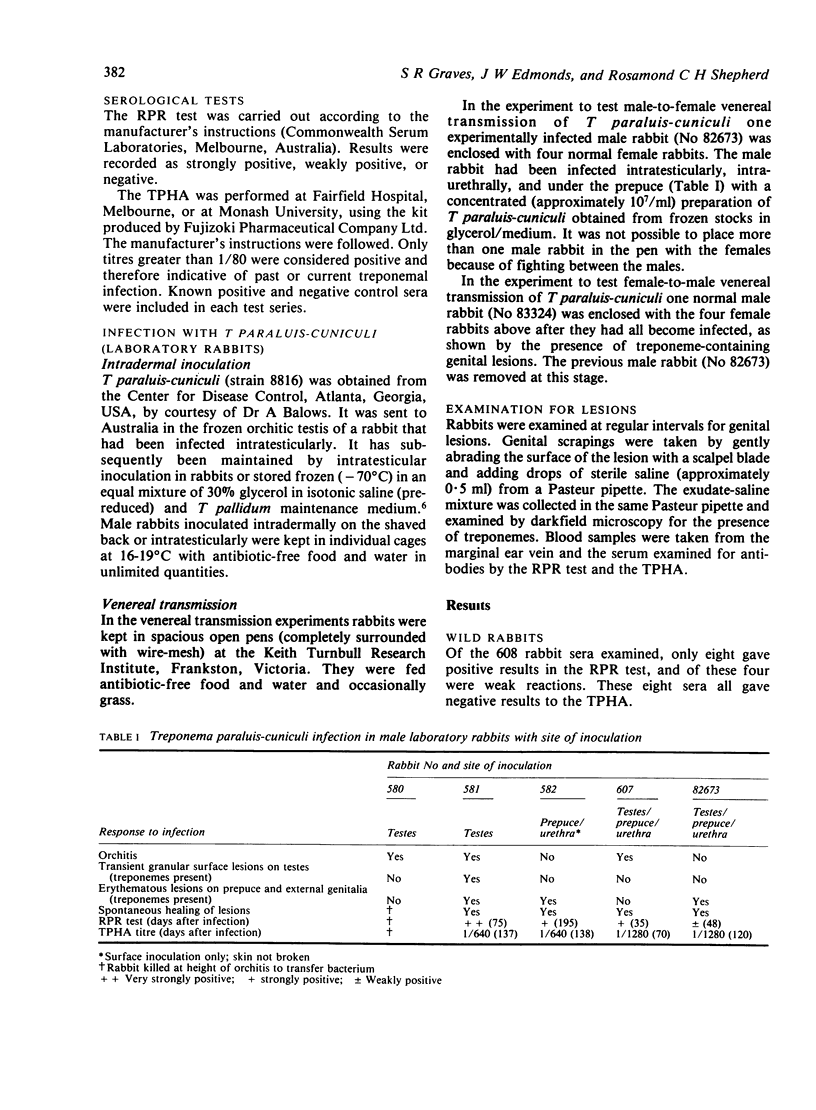
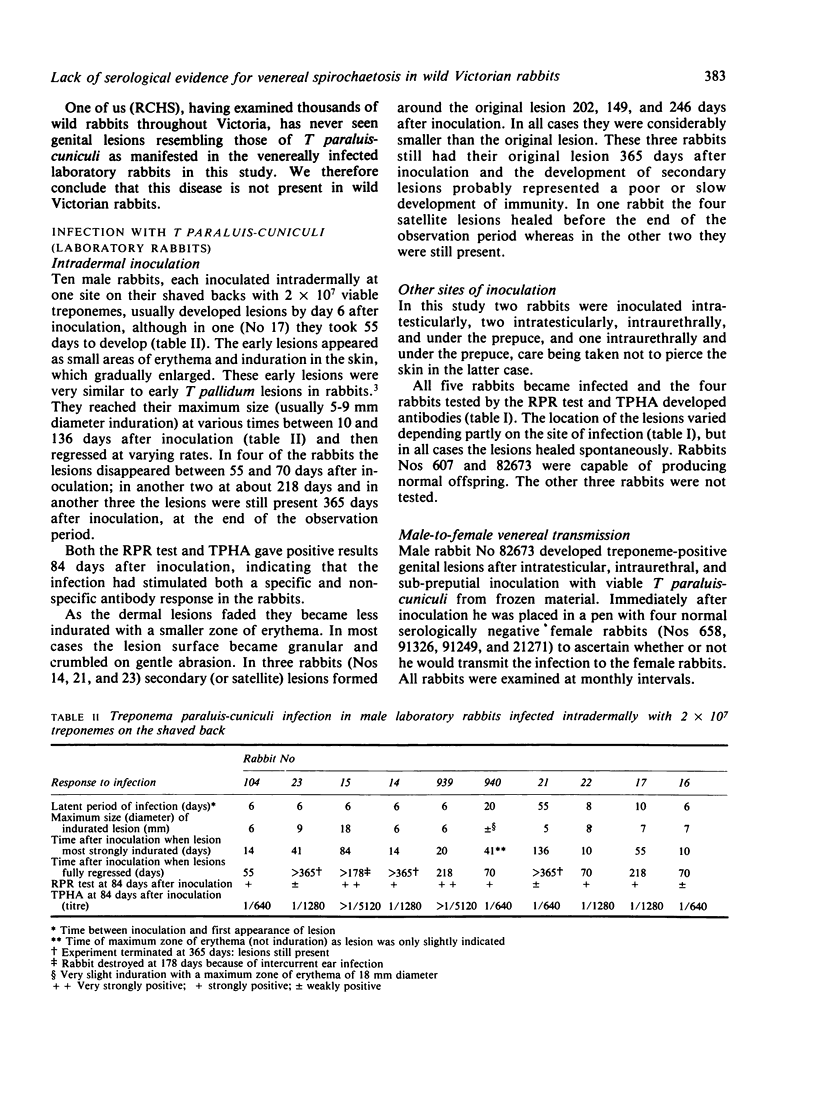
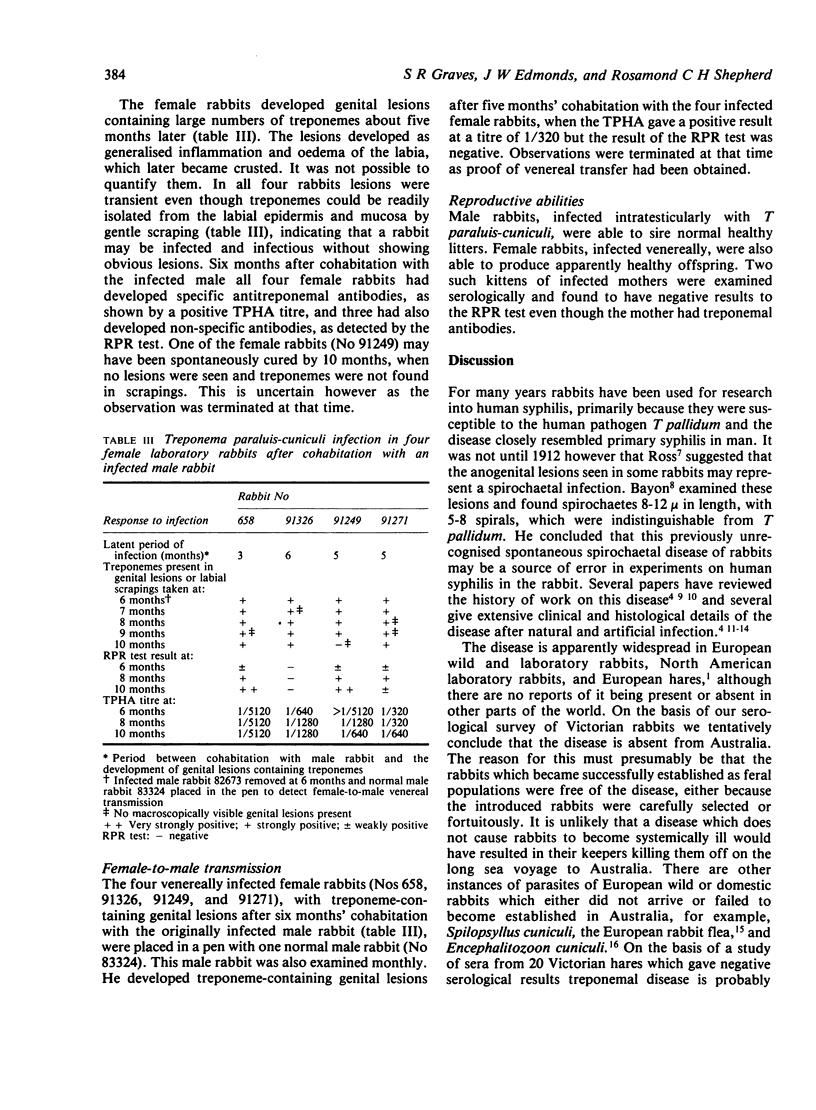
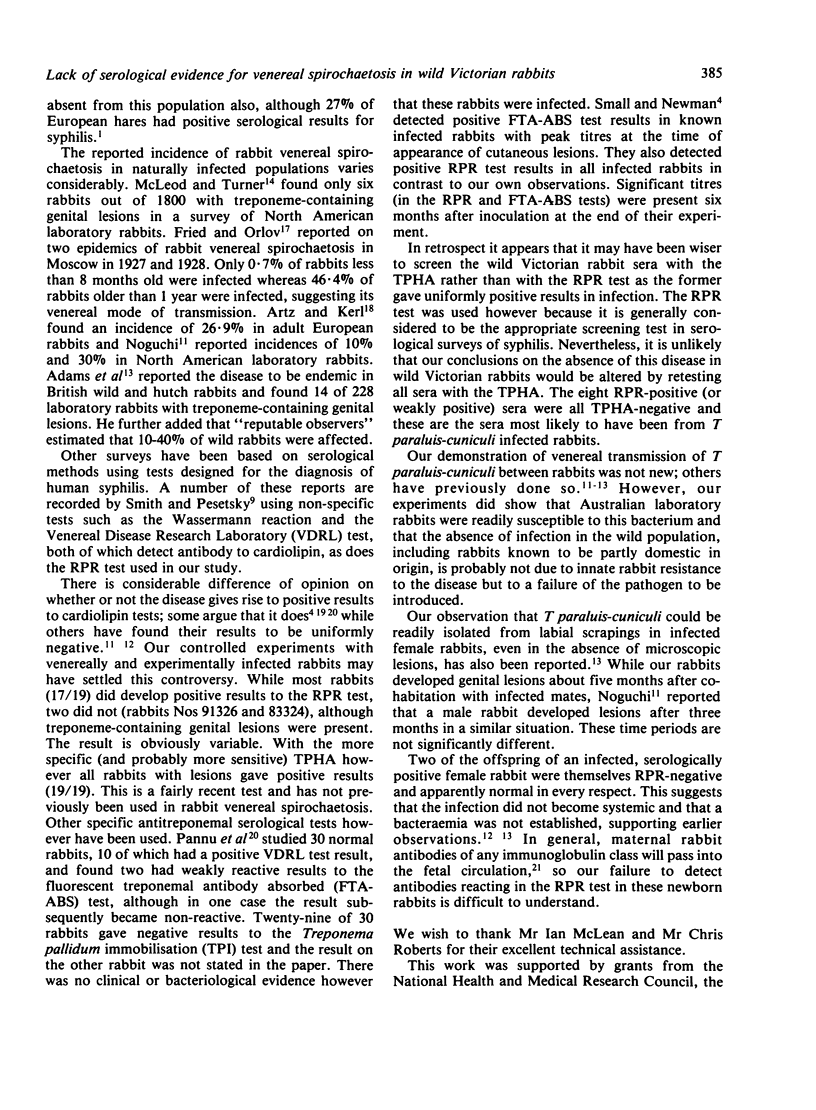
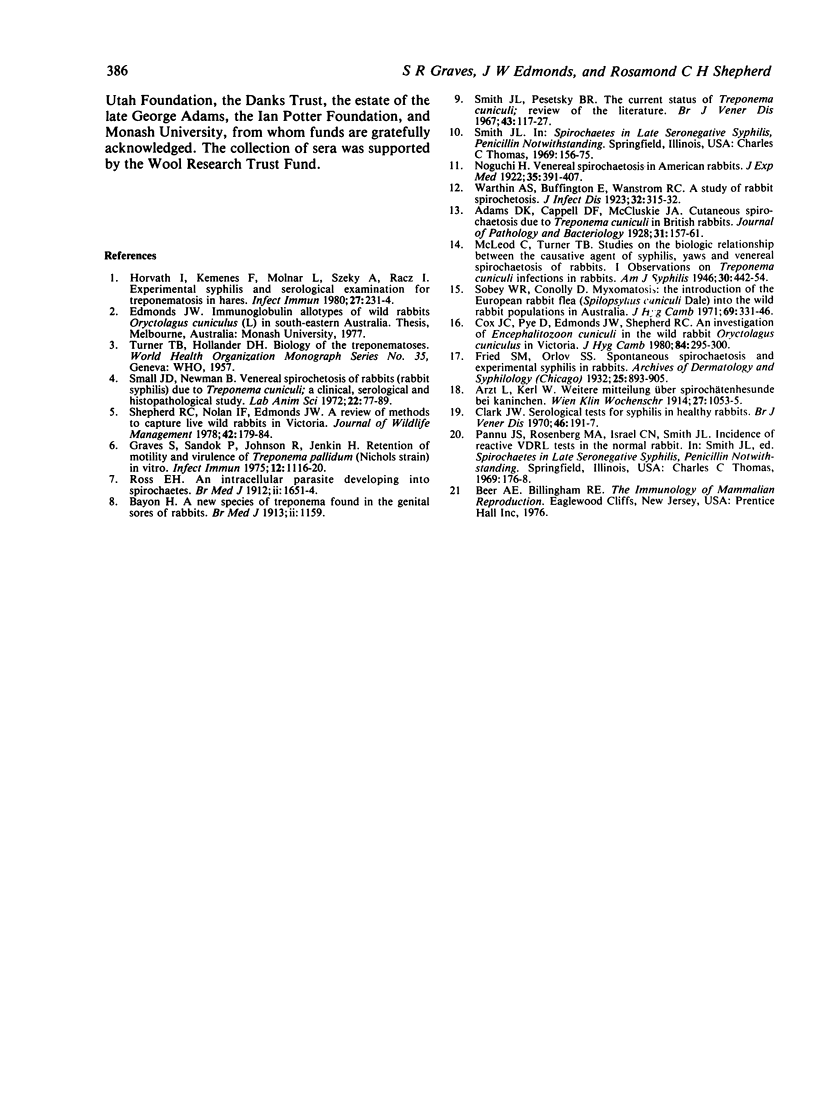
Selected References
These references are in PubMed. This may not be the complete list of references from this article.
- Clark J. W., Jr Serological tests for syphilis in healthy rabbits. Br J Vener Dis. 1970 Jun;46(3):191–197. doi: 10.1136/sti.46.3.191. [DOI] [PMC free article] [PubMed] [Google Scholar]
- Cox J. C., Pye D., Edmonds J. W., Shepherd R. An investigation of Encephalitozoon cuniculi in the wild rabbit Oryctolagus cuniculus in Victoria, Australia. J Hyg (Lond) 1980 Apr;84(2):295–300. doi: 10.1017/s0022172400026796. [DOI] [PMC free article] [PubMed] [Google Scholar]
- Graves S. R., Sandok P. L., Jenkin H. M., Johnson R. C. Retention of motility and virulence of Treponema pallidum (Nichols strain) in vitro. Infect Immun. 1975 Nov;12(5):1116–1120. doi: 10.1128/iai.12.5.1116-1120.1975. [DOI] [PMC free article] [PubMed] [Google Scholar]
- Horvath I., Kemenes F., Molnar L., Szeky A., Racz I. Experimental syphilis and serological examination for treponematosis in hares. Infect Immun. 1980 Jan;27(1):231–234. doi: 10.1128/iai.27.1.231-234.1980. [DOI] [PMC free article] [PubMed] [Google Scholar]
- Small J. D., Newman B. Venereal spirochetosis of rabbits (rabbit syphilis) due to Treponema cuniculi: a clinical, serological, and histopathological study. Lab Anim Sci. 1972 Feb;22(1):77–89. [PubMed] [Google Scholar]
- Smith J. L., Pesetsky B. R. The current status of treponema cuniculi. Review of the literature. Br J Vener Dis. 1967 Jun;43(2):117–127. doi: 10.1136/sti.43.2.117. [DOI] [PMC free article] [PubMed] [Google Scholar]
- Sobey W. R., Conolly D. Myxomatosis: the introduction of the European rabbit flea Spilopsyllus cuniculi (Dale) into wild rabbit populations in Australia. J Hyg (Lond) 1971 Sep;69(3):331–346. doi: 10.1017/s0022172400021574. [DOI] [PMC free article] [PubMed] [Google Scholar]


